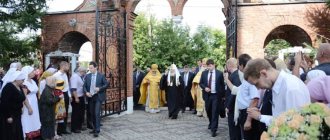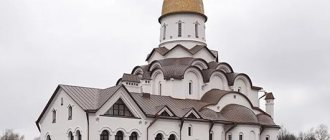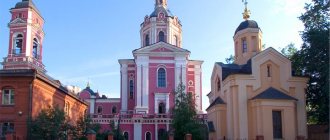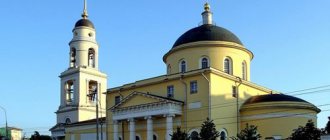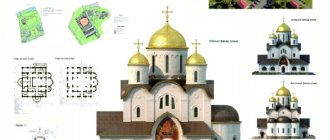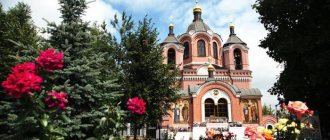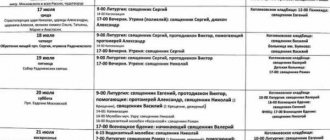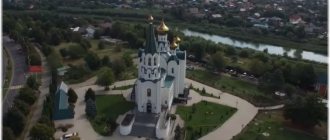Mir
Russia Tver region Tver Ascension Cathedral (Tver) Map is loading...
{"format":"leaflet","minzoom":false,"maxzoom":false,"limit":50,"offset":0,"link":"all","sort":[""], "order":[],"headers":"show","mainlabel":"","intro":"","outro":"","searchlabel":"\u2026 \u0441\u043b\u0435\ u0434\u0443\u044e\u0449\u0438\u0435 \u0440\u0435\u0437\u0443\u043b\u044c\u0442\u0430\u0442\u044b","default":"","import-annotation":false,"width ":"auto","height":"350px","centre":{"text":"","title":"""link":"""lat":56.859502800000001343505573458969593048095703125,"lon": 35.90955559999999735509845777414739131927490234375,"icon":""},"title":"","label":"","icon":"","lines":[],"polygons":[],"circles":[ ],"rectangles":[],"copycoords":false,"static":false,"zoom":8,"defzoom":14,"layers":["OpenStreetMap"],"image layers":[] ,"overlays":[],"resizable":false,"fullscreen":true,"scrollwheelzoom":true,"cluster":false,"clustermaxzoom":9,"clusterzoomonclick":true,"clustermaxradius":80, "clusterspiderfy":true,"geojson":"","clicktarget":"","showtitle":true,"hidenamespace":false,"template":"","userparam":"","activeicon": "","pagelabel":false,"ajaxcoordproperty":"","ajaxquery":"","locations":[{"text":"\u003Cb\u003E\u003Ca href=\"/palomnik/%D0% 92%D0%BE%D0%B7%D0%BD%D0%B5%D1%81%D0%B5%D0%BD%D1%81%D0%BA%D0%B8%D0%B9_%D1%81% D0%BE%D0%B1%D0%BE%D1%80_(%D0%A2%D0%B2%D0%B5%D1%80%D1%8C)\» title=\»\u0412\u043e\u0437\ u043d\u0435\u0441\u0435\u043d\u0441\u043a\u0438\u0439 \u0441\u043e\u0431\u043e\u0440 (\u0422\u0432\u0435\u0440\u044c)\»\u003E \u0412\u043e\u0437\ u043d\u0435\u0441\u0435\u043d\u0441\u043a\u0438\u0439 \u0441\u043e\u0431\u043e\u0440 (\u0422\u0432\u0435\u0440\u044c)\u003C/a \u003E\u003C/b\ u003E\u003Chr /\u003E\u003Ca href=\»/palomnik/%D0%A1%D0%B2%D0%BE%D0%B9%D1%81%D1%82%D0%B2%D0%BE:%D0 %90%D0%BD%D0%BD%D0%BE%D1%82%D0%B0%D1%86%D0%B8%D1%8F\" title=\"\u0421\u0432\u043e\u0439\u0441 \u0442\u0432\u043e:\u0410\u043d\u043d\u043e\u0442\u0430\u0446\u0438\u044f\»\u003E\u0410\u043d\u043d\u043e\u0442\u0430\u0446 \u0438\u044f\u003C/ a\u003E: "'\u0421\u043e\u0431\u043e\u0301\u0440 \u0412\u043e\u0437\u043d\u0435\u0441\u0435\u0301\u043d\u0438\u044f \u0413\u0 43e\u0441\u043f\u043e '' 432\u043d\u044b\u0439\u0445 \u0440\u0430\u043c \u0422\u0432\u0435\u0440\u0441\u043a\u043e\u0439 \u0435\u043f\u0430\u0440\u0445\u0438\u0438 \u0420\u0443 \u0441\u0441\u043a\u043e\u0439 \u043f\u0440\u0430\u0432\u043e\u0441\u043b\u0430\u0432\u043d\u043e\u0439 \u0446\u0435\u0440\u043a\u0432\u0438, \u043d\u0430 \u043f\u0435\u0440\u0435\ u0441\u0435\u0447\u0435\u043d\u0438\u0438 \u0422\u0432\u0435\u0440\u0441\u043a\u043e\u0433\u043e \u043f\u0440\u043e\u0441\u0 43f\u0435\u043a\u0442\u0430\ u0438 \u0421\u043e\u0432\u0435\u0442\u0441\u043a\u043e\u0439 \u0443\u043b\u0438\u0446\u044b (\u0426\u0435\u043d\u0442\u0440\u 0430\u043b\u044c\u043d\u044b \u0439\u0440\u0430\u0439\u043e\u043d). \u0418\u043c\u0435\u0435\u0442 \u0441\u0442\u0430\u0442\u0443\u0441 \u0430\u0440\u0445\u0438\u0435\u0440\u0435\u0439\u0441\ u043a\u043e\u0433\u043e\u043f \u043e\u0434\u0432\u043e\u0440\u044c\u044f.","title":"\u0412\u043e\u0437\u043d\u0435\u0441\u0435\u043d\u0441\u043a\u0438\u0439 \ u0441\u043e \u0431\u043e\u0440 (\u0422\u0432\u0435\u0440\u044c)","link":"","lat":56.859502800000001343505573458969593048095703125,"lon":35.909555 59999999735509845777414739131927490234375,"icon":""}],"imageLayers ":[]}
56.859675; 35.909453
Russia, Tver, Sovetskaya street, 26
Tver, Tver region 170100
Russia
Telephone:
(4822) 32-28-27
Cathedral of the Ascension of the Lord in Tver
- Orthodox church of the Tver diocese of the Russian Orthodox Church, at the intersection of Tverskoy Prospekt and Sovetskaya Street (Central District). It has the status of a bishop's metochion.
History[edit]
The history of the cathedral goes back centuries. It is known that until 1612, near the present church there was a wooden one with the same name. Nearby there was also a wooden church in the name of the Epiphany of the Lord. These were small parish cathedrals (warm and cold). Both were burned during the Polish-Lithuanian intervention. In 1624, the Church of the Ascension was rebuilt, and in 1709, two churches stood here again - the Ascension and the Epiphany. But in 1725, the Epiphany Church burned down and was never rebuilt.
Later, at this place, a crossroads, a wooden church was built in the name of the Ascension of the Lord with the throne of the Epiphany. But this temple did not last long. It burned to the ground during a huge fire. After some time, the parishioners asked for permission to build a new church on this site, already made of stone, with the same name and the same chapel. A deed of temple deed was given. In 1751, the chapel of the Epiphany was completed by the builders “with clean images and all church vestments removed” and consecrated.
Construction of the cathedral itself continued for almost another 9 years, and in 1760 the main chapel was consecrated. But this cathedral did not last long. On May 19, 1763, a devastating fire occurred in Tver. The newly built church also burned down. But the parishioners were able to quickly restore the chapel of the Epiphany, which was consecrated in September. Worship services have resumed there. The cathedral itself took a long time to be restored. Finally, in 1768, the interior decoration was restored. The temple was completely built and consecrated. In 1805, a new bell tower was erected near the cathedral.
Time passed. Extensive stone construction was carried out in the center of Tver. Such wonderful masters as K. Rossi, N. Legrand and I. Lvov worked in the city. The cathedral, located in the center of the city, with its already unfashionable “baroque” decoration, ceased to satisfy the illustrious owners and parishioners. The question arose about its restructuring. In 1818, parishioners and priests asked permission to dismantle the cathedral and build a new, more spacious one in its place, with the chapels of Anthony and Theodosius of Pechersk and the Epiphany. The petition was accompanied by a design for the church, signed by the provincial architect N. Legrand. But there were no funds for this work. They decided to expand the cathedral by constructing a new chapel. In 1831, the chapel of Anthony and Theodosius of Pechersk was completed and consecrated. In 1833, on the Feast of the Ascension of the Lord, the entire temple was consecrated with a new gilded iconostasis and walls covered with paintings. And only in 1836 the chapel of the Epiphany of the Lord was consecrated.
The cathedral became a true decoration of the city. During construction, white stone was widely used, from which the columns, cornices, base, steps of the temple and bell tower were made. The cathedral was painted ocher, the decorative details were whitewashed. Painting was used both inside and outside. With the help of painting in the portico, a unique imitation of volumetric reliefs using the grisaille technique was created. The dome and crosses on the cathedral and bell tower were gilded. The roof and dome were covered with tinned iron. Wrought iron was widely used to make bars on windows and doors. The window frames and doors were tinted to look like stained oak.
Everything about the structure was thought out to the smallest detail. The cathedral looked majestic. Unfortunately, it is impossible to completely trace the chronology of the reconstruction - the archival fund of the temple has not completely survived. These are mainly minor repair alterations.
After the revolution in 1922, utensils and icons were confiscated from the Ascension Cathedral by the commission for the confiscation of church valuables. And in 1935 the temple was closed. Since 1936, the building housed an exposition of the regional museum of local lore. In the fall of 1941, Divine services were temporarily resumed. In 1972, the building was transferred to the exhibition hall of the Regional Industrial Exhibition. At the same time, its significant reconstruction was carried out: interfloor ceilings were made, the heating system was replaced, and a ramp was added on the eastern side.
In 1991, at the request of believers, work began on transferring the cathedral to the Church. On January 7, 1993, on Christmas Day, the first service was held in the church.
History and description of the cathedral
About 400 years ago, on the site of the modern Church of the Ascension of the Lord, there were two churches. Both buildings were wooden. One of the parish cathedrals was warm, the second was cold. During the invasion of the Polish-Lithuanian invaders, both churches burned to the ground. But believers rebuilt a new building in 1624. By the beginning of the 18th century, another temple was restored. The churches were named after the Ascension and Epiphany. However, in 1725, the Epiphany Church burned down again and was never rebuilt.
Current state[edit]
Activities of the parish[edit]
The church has a Sunday school, a library, and social service.
Description[edit]
During the construction of the cathedral, white stone was very widely used: white stone columns, cornices, plinth, temple steps and bell towers. The temple was painted ocher, the decorative details were whitewashed. Painting was used both inside and outside. With the help of painting in the portico, a skillful composition of volumetric reliefs using the grisaille technique was created.
The dome and cross on the temple were gilded. The cross on the spire of the bell tower was also gilded. The roof and dome were covered with tinned iron. Wrought iron was widely used (bars on windows and doors). The window frames and doors were tinted to look like stained oak. Everything about the structure was thought out to the smallest detail.
Current state and activities of the parish
Today, divine services are performed daily in the temple. The doors of the cathedral are open for believers from 7:00 to 20:00. On weekdays, the Liturgy begins at 7:40. On Sundays, the early Liturgy is served from 6:40, the late Liturgy from 8:40. Evening service begins at 17:00.
Divine service in the Ascension Cathedral
There is a Sunday school at the cathedral, where students are introduced to the Holy Scriptures and the Law of God and taught the Church Slavonic language. The library contains books that contribute to the spiritual enlightenment of believers.
The church also provides social support to those in need. Hot food is delivered to people who are unable to take care of themselves, medicines are purchased, and things are distributed. The clergy of the parish are helping kindergarten No. 129 resolve the issue of purchasing dishware and organizing the Nativity of Christ.
Shrines[edit]
- Relics of the Hieromartyr Thaddeus
The relics of the holy martyr Thaddeus
The relics of the holy martyr Thaddeus were found at the Burning Bush cemetery. Sschmch. Thaddeus, during his lifetime, acquired the gift of clairvoyance, foreseeing the future, and healing the sick. And now people turn to him for help in difficult life situations.
On December 29, 1994, a significant and unusually joyful event took place in Tver. With the blessing of the head of the Tver diocese, Bishop of Tver and Kashinsky Victor, the solemn transfer of the relics of the holy martyr Archbishop Thaddeus of Tver took place. They were brought from Moscow after examination by a scientific commission.
- Icon of the Mother of God “Fat Mountain”
In the last century, in the Smolensk Cemetery Church of Tver there was a particularly revered icon of the Mother of God, known as the “Fat Mountain”. It was placed in the iconostasis of the side church of the Smolensk Church, dedicated to Her name, and was often brought into their homes at the request of those wishing to do so.
The Mother of God is depicted on the icon in small profile with the Eternal Child on her left hand. The head of the Mother of God is turned slightly to the right, her eyes are directed directly at the person praying. In her right hand, the Mother of God holds a high (fat) mountain, on which rises a temple with several domes. The Eternal Child blesses the church with his right hand. The letter on the icon is quite ancient.
Cathedral of the Ascension of the Lord, Tver
Tver is an ancient Russian city with an interesting history, located on the East European (Russian) plain, standing on the Volga River, at the confluence of one of the largest rivers in its upper reaches, the Tvertsa, on the left side. The Cathedral of the Ascension of the Lord in Tver is located almost in the very center of the city at the intersection of two streets: Sovetskaya (formerly Vladimirskaya, then Ekaterininskaya - in honor of Catherine II, who helped restore the city after a big fire, and then from the beginning of the 19th century Millionnaya - in honor of a million rubles, allocated by Catherine for the restoration of the city after the fire) - one of the central streets of Tver at different times. And Tverskoy Prospekt (Ilyinsky Lane, named after the Temple of Elijah the Prophet, which stood on it, and only from 1977
Tverskoy Prospekt). Once upon a time, Ilyinsky Lane was a small passage to the Volga, but in the post-war years a major reconstruction of the city was started, a number of buildings were demolished and the lane was turned into an avenue. At the same time, as a result of the demolition of buildings, the Ascension Cathedral emerged from the block onto the avenue and found itself at the intersection of two streets in the center.
The existing cathedral itself was built according to the design of the Tver architect I.F. Lvov, with donations from local merchants Tatarintsev, Bobrov (the main amount), and Podsypanin - for the completion of the chapels (Tver merchants, thanks to their favorable location, conducted successful trade with many Russian cities, Genoese colonies in the Crimea, the Golden Horde, driving goods up and down the Volga , these were furs, leather goods, fur coats, grain, flax, canvas, honey and much more, and they brought back tea, raisins, nuts, precious stones). But the church on the site of the cathedral existed much earlier, its fate was not enviable. Tver was ravaged and burned many times, attacked by the Mongol-Tatars, but over several relatively calm centuries the churches and the city itself were rebuilt. Even before the beginning of the XVII
centuries, there were two wooden churches here inside the block: the Epiphany and nearby the Ascension of the Lord, one summer, the other winter.
But in troubled times, the Polish-Lithuanian invaders at the time of the devastation of Tver were burned. Then they were quickly recreated, but again they burned and were restored and burned again. Over the years, it looked something like this - fires in 1717, 1725, 1763, both on their own and together with the entire city during the large city fires that engulfed Tver in those distant times. In 1805
, a stone bell tower was built inside the block, extending towards the former Ilyinsky Lane.
And in 1862, a project was developed and construction began on a large stone temple by I.FLvov (the namesake of the famous architect N.A. Lvov, also a native of the Tver region). Provincial architect of Tver. On one of the main streets of the center of Tver, Ekaterininskaya. Ivan Fedorovich Lvov (born in the Bezhetsky district of the Tver province in the Frolyatino estate, graduated from the first architectural school in Moscow - the Expedition of Kremlin buildings, transformed into the School of Architecture in 1805
) built more than 100 residential and public buildings in Tver, a number of temples and churches in the Tver region and various cities of Tver province.
He created in the style of classicism. Its development determined the current appearance of Tver. The Ascension Cathedral was also built in the style of late classicism, which is characterized by clear geometric shapes, restrained decor and modest design. Clear repeating horizontal and vertical lines. The building was built from local white stone (limestone, called Staritsky white stone or Staritsky marble, mined nearby 40 km
from Tver in the Staritsky quarries near the city of Staritsa on the banks of the Volga, at a depth of 20
-25
meters, only here the desired color and quality comes out limestone has been mined here since
the 12th
century): the columns, plinth, steps of the temple and bell tower, and the balustrade of the choir are made of it. The temple building itself, built of brick, was plastered and painted with ocher, and the decorative details were whitewashed. The temple was painted inside and out. In the outer portico, the grisaille technique is used, which allows you to create the appearance of three-dimensional bas-reliefs (grisaille is a painting technique performed in sepia-colored halftones - light brown paint or gray, only one shade is used to create three-dimensional drawings, such as bas-reliefs, architectural or sculptural elements). The word grisaille itself comes from the French word grey. The sails in the dome space inside the temple were also painted. What we can see today. The sails are part of the vault under the dome, made in the shape of a spherical triangle. The window and door grilles were made by forging (iron came to Tver from the Demidov factories in the Urals).
The doors and window frames were painted to resemble bog oak (charcoal black with a purple tint). Bog oak is oak wood obtained from the trunks of trees that had been under water for a long time (drowned). The dome of the cathedral and the roof of the bell tower are covered with tinned iron (i.e., iron covered with a protective film of tin; tin does not interact with water and does not oxidize, so tinned iron is more durable in use), the crosses on the dome and on the bell tower were gilded. And despite some heaviness, the cathedral became one of the decorations of Tver. But its fate, like that of all church buildings in post-revolutionary times, is not rosy. Although the Temple stood almost inside the block, with only one of its facades facing Millionnaya Street, it was striking.
Over the years in Soviet times, history developed approximately as follows: • 1922 - confiscation of church utensils (icons, various liturgical objects of value), • 1935 - closed to believers, • 1936 - a local history museum was established (Tver Regional History Museum opened in 1866
year - was initially located in the building of the Tver men's gymnasium, moved several times, ended up in a cathedral in the first half of the last century, in
1994
moved into the restored building of the Real College) • 1941 - resumption of services, • 1972 - partial reconstruction with the arrangement of an exhibition hall regional industrial exhibition (the Tver Regional House of Science and Technology was founded in
1962
; the exhibition is currently operating at the TDN), • 1991
-
1993 - transfer of the diocese and the first services, • 2004 - restoration work and return to the original form (unfortunately Almost all the documentation on the reconstruction of the cathedral was lost, so the restorers had to do very painstaking work to recreate the original appearance of the temple).
Today it is the bishop's courtyard. A bishop's compound is a temple together with a building where a bishop can temporarily stay or carry out some activities in his interests. Officially, the name sounds like this: Religious organization Bishop's Compound Ascension Cathedral of the city of Tver of the Tver and Kashin Diocese of the Russian Orthodox Church (Moscow Patriarchate). The main temple with three chapels (chapels are a specially allocated part of the main building to accommodate an additional altar or buildings specially built for this purpose on the South or North side). The cathedral is built in extensions - the chapel of the Ascension of the Lord, the chapel of Anthony and Theodosius of Pechersk (founders Kiev-Pechersk Lavra) and the chapel of the Epiphany.
Various social projects are carried out at the Temple: • there is a library and a Sunday school, • a social service is conducted - hot food is prepared and distributed for the poor and needy. Parishioners with limited mobility are also visited, to whom hot food is also delivered and necessary items for their wardrobe are purchased. The interior walls of the cathedral are painted white and pale turquoise, the floor is covered with marble of different colors, and the iconostasis is also made of white marble and gilding. The cathedral contains the following relics: • the relics of Archbishop of Tver Hieromartyr Thaddeus (they help people in difficult life situations), canonized in 1997
year, • revered copies of the icons of the Mother of God Fat Mountain and Tikhvin (the original icon of the Mother of God Fat Mountain disappeared into history, and the icon of the Mother of God Tikhvin is located in the Tikhvin Monastery near St. Petersburg).
The icon of the Mother of God of the Fat Mountain was once widespread in churches in Rus', but today it is rarely seen anywhere. The icon depicts the Mother of God with the infant Christ in one hand and in the other she holds a white Orthodox church with golden domes, standing on a mountain. The Mother of God is depicted in such a way that she simultaneously looks at the person praying and at the temple. In the XVII
century, this icon was in the temple of one of the monasteries in Tver and was received by the contractor as a reward for good work from the abbot.
It was passed down in the family and gradually ended up in one of the churches in Tver. There is a special prayer for this icon. Helps in family matters, heals babies. The miraculous nature of the icon is evidenced by the many gifts from grateful petitioners with which the icon in the church is hung. During his lifetime, Archbishop Thaddeus of Tver acquired the gift of clairvoyance and healing; he died (like many clergy during the 1917
) in
1937
in an NKVD prison.
His relics were discovered only in 1993
thanks to Archimandrite Damaskin (Orlov), head of the regional fund “Memory of Martyrs and Confessors of the Russian Orthodox Church”, Doctor of Historical Sciences.
Who carried out painstaking research work. He researched the life of Archbishop Thaddeus of Tver and finally discovered a burial place in one of the Tver cemeteries. The relics were sent to Moscow for examination and only after that, in 1994
, they were transferred to the cathedral.
The Church of the Ascension of the Lord is not the only interesting temple in Tver. After all, the city has existed since the 12th
century. But this is an outstanding monument of classicism in the Tver expanses.
A word about worship
The central place in our lives as Orthodox Christians is occupied by the Cycle of Divine Services. Thanks to the services and Sacraments performed in them and through them, we are healed and filled with the Grace of the Holy Spirit. The normal weekly cycle includes Great Vespers on Saturday evening, and Morning Prayer and Divine Liturgy on Sunday morning. Other services are prescribed throughout the year, but these services are the basis of the worship service.
Affiliation:
Russian Orthodox Church, Tver Metropolis, Tver Diocese, Deanery of monasteries, bishops' and monastic metochions
Address:
170000, Tver, st. Sovetskaya, 26
Language of services:
Church Slavonic
Telephone:
+7
Email:
Website:
vosnesenie.ru
The brilliance and poverty of Sovetskaya Street in Tver
The houses along Sovetskaya Street in Tver are very beautiful. In some of its features it resembles Nevsky Prospekt in St. Petersburg. But when you start to look more closely, you sadly notice that almost all the buildings require repairs. And the matter can hardly be limited to just cosmetic work.
And one more interesting detail: many houses on Sovetskaya Street were completed during the Soviet years. But the additions turned out to be so in style that only the date on the building’s façade gives away the time of construction.
Beautiful house with a later addition
The house was built in 1949
Brick walls are visible under a fallen piece of plaster
House on Sovetskaya Street
This house needs renovation
So we looked at the main attractions of Sovetskaya Street - the main street of Tver. I think you are convinced that there are many interesting objects here that are worth getting to know better. I’m looking forward to the restoration of the Traveling Palace being completed, so I can tell you, my readers, about its beauties and treasures.
© Website “On the Roads of the Middle Way”, 2009-2021. Copying and reprinting of any materials and photographs from the site anashina.com in electronic publications and printed publications is prohibited.
Nearest temples, churches and monasteries in Tver
The distance is indicated from [name] at the address Tverskaya region, Tver, Sovetskaya street, 56k1.
| Distance | Address |
| 0 m. | Tver, Sovetskaya street, 56k1 |
| 296 m. | Tver, Volny Novgorod street, 11 |
| 475 m. | Tver, Sovetskaya street, 56k1 |
